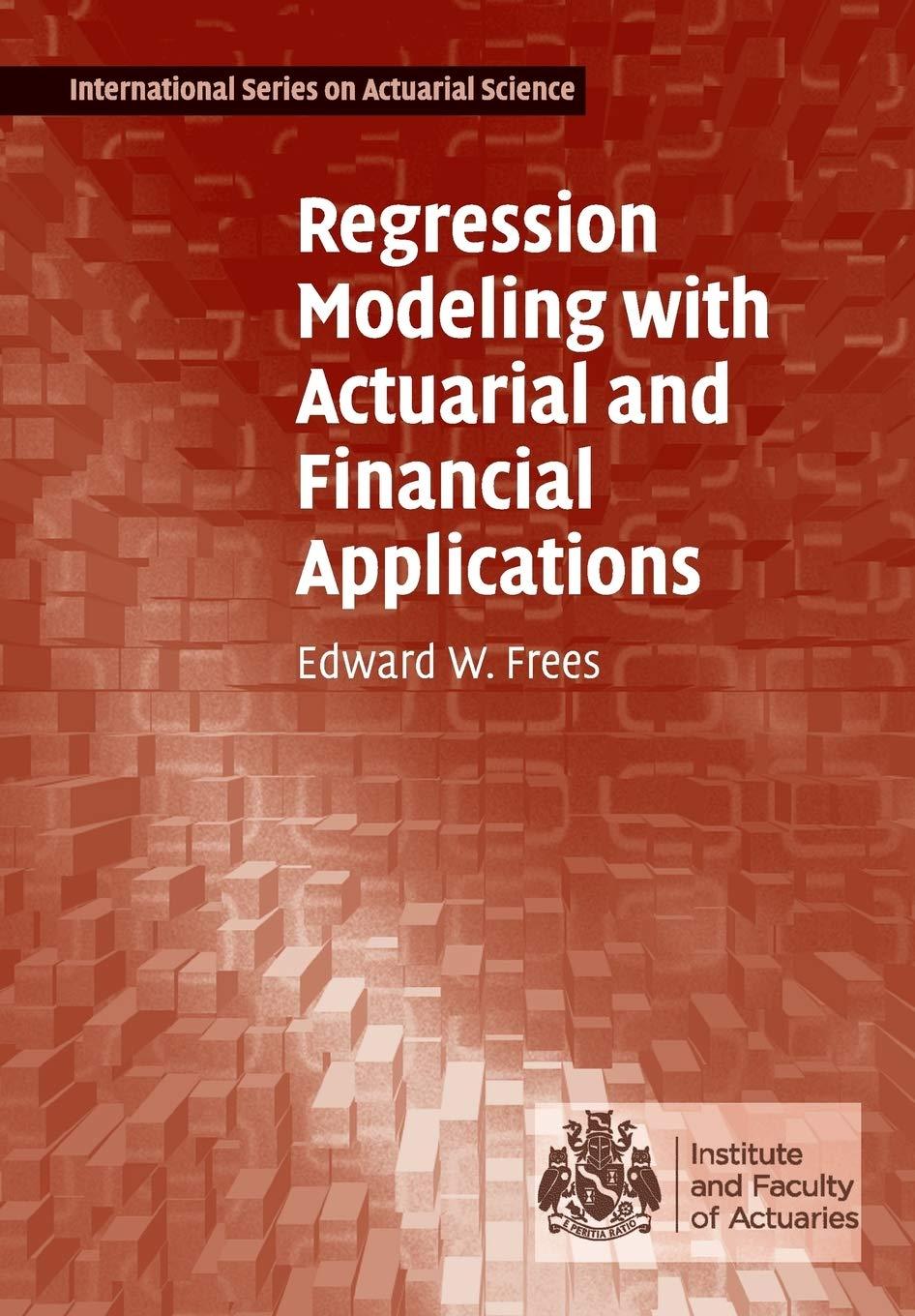This exercise considers data from the Medical Expenditure Panel Survey (MEPS), conducted by the U.S. Agency of
Question:
This exercise considers data from the Medical Expenditure Panel Survey (MEPS), conducted by the U.S. Agency of Health Research and Quality. MEPS is a probability survey that provides nationally representative estimates of health-care use, expenditures, sources of payment, and insurance coverage for the U.S. civilian population. This survey collects detailed information on individuals of each medical-care episode by type of services, including physician office visits, hospital emergency room visits, hospital outpatient visits, hospital inpatient stays, all other medical provider visits, and use of prescribed medicines. This detailed information allows one to develop models of health-care use to predict future expenditures. You can learn more about MEPS at We consider MEPS data from panels 7 and 8 of 2003 that consists of 18,735 individuals between ages 18 and 65. From this sample, we took a random sample of 2,000 individuals that appear in the file “HealthExpend.” From this sample, there are 157 individuals that had positive inpatient expenditures. There are also 1,352 that had positive outpatient expenditures. We will analyze these two samples separately. Our dependent variables consist of amounts of expenditures for inpatient (EXPENDIP) and outpatient (EXPENDOP) visits. For MEPS, outpatient events include hospital outpatient department visits, office-based provider visits, and emergency room visits excluding dental services. (Dental services, compared to other types of health-care services, are more predictable and occur on a more regular basis.) Hospital stays with the same date of admission and discharge, known as zero-night stays, were included in outpatient counts and expenditures. (Payments associated with emergency room visits that immediately preceded an inpatient stay were included in the inpatient expenditures. Prescribed medicines that can be linked to hospital admissions were included in inpatient expenditures, not in outpatient utilization.)
Part 1: Use only the 157 individuals who had positive inpatient expenditures and do the following analysis:
a. Compute descriptive statistics for inpatient (EXPENDIP) expenditures.
a(i) What is the typical (mean and median) expenditure?
a(ii) How does the standard deviation compare to the mean? Do the data appear to be skewed?
b. Compute a box plot, histogram, and a (normal) qq plot for EXPENDIP. Comment on the shape of the distribution.
c. Transformations.
c(i) Take a square root transform of inpatient expenditures. Summarize the resulting distribution using a histogram and a qq plot. Does it appear to be approximately normally distributed?
c(ii) Take a (natural) logarithmic transformation of inpatient expenditures. Summarize the resulting distribution using a histogram and a qq plot. Does it appear to be approximately normally distributed?
Part 2: Use only the 1,352 individuals who had positive outpatient expenditures.
d. Repeat part (a) and compute histograms for expenditures and logarithmic expenditures. Comment on the approximate normality for each histogram.
Step by Step Answer:

Regression Modeling With Actuarial And Financial Applications
ISBN: 9780521135962
1st Edition
Authors: Edward W. Frees




